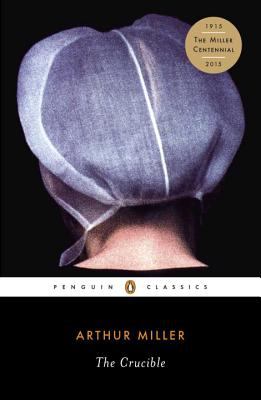
Based on the historical event known as the Salem Witch Trials, The Crucible by Arthur Miller acts as an allegory for McCarthyism, a term coined after Senator Joseph McCarthy who wrongfully accused people of being a communist during the Cold War. In fact, Miller was also accused of being a communist and was thrown in jail for refusing to condemn others. The play is centered around a small theocratic society in Salem, Massachusetts where the cries of witchcraft spark hysteria in the small town.
After a group of girls gets caught dancing in the woods by the local minister, Reverend Samuel Parris, cries of witchcraft spread throughout Salem, and Reverend John Hale is called to investigate. He questions Tituba, a black slave from Barbados and eventually, Tituba gives into the pressure and falsely confesses that she had committed witchcraft. One of the girls, Abigail Williams, uses this as an opportunity to shift the blame away from herself and the rest of the girls follow suit. Through this, Abigail’s true intentions are revealed as she hopes to reunite with John Proctor, a local farmer, with whom she had previously had an affair by accusing his wife, Elizabeth Proctor. As the play progresses, Abigail, along with many others, accuse their fellow neighbors of witchcraft for personal gain or for vengeance. For instance, Thomas Putnam, who is a wealthy and influential farmer, uses the atmosphere of hysteria to accuse people of witchcraft and then buy their land. In an attempt to stop the claims of witchcraft against his wife, John Proctor goes to court with his servant, Mary Warren, who participated in the witch trials with Abigail. When Mary Warren fails to testify in court, Proctor wrestles with whether he should expose Abigail and confess his sins. Faced with the possibility of his wife being hanged, Proctor admits he committed adultery and therefore relinquishes his good reputation in Salem. Judge Danforth then summons Elizabeth Proctor to determine Proctor’s credibility, but she lies to protect Proctor’s honor, thus condemning him to hang. In the end, Proctor is given a chance to live if he publicly declares that he and his friends, Rebecca Nurse and Martha Corey, committed witchcraft. He refuses to incriminate his friends, and their death ultimately brings an end to the Salem witch trials.
Through Miller’s The Crucible, he illustrates the parallels between the Salem witch trials and McCarthyism with the common theme of hysteria and its role in tearing apart a community. The atmosphere of hysteria in Salem allows for the townsfolk to express their resentment and act on personal grudges caused by Salem’s rigid religious society that does not allow for the release of ones emotions. For instance, Abigail uses the trials to gain unprecedented influence in Salem, and she is able to accuse even the most respectable members in Salem. By accusing Elizabeth Proctor, she shows her true motivations and how she is driven by her sexual desires and lust for power.
In my opinion, Miller does a fantastic job of bringing the injustices of McCarthyism to light, and The Crucible will be regarded as a historical piece of literature that will undoubtedly stand the test of time as a classic. Although The Crucible is based off the real events that occurred during the Salem Witch Trials, the plot that Miller develops is fictional. Despite all of this, Miller is able to convey the central theme of hysteria that reflects these historical events. I would rate The Crucible a 5/5 as it incorporates all the elements necessary
Check out The Crucible at the Newport Beach Public Library.